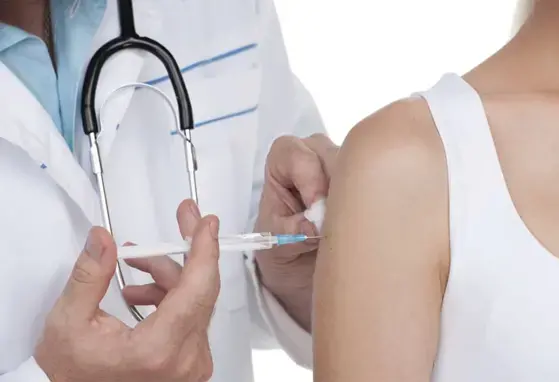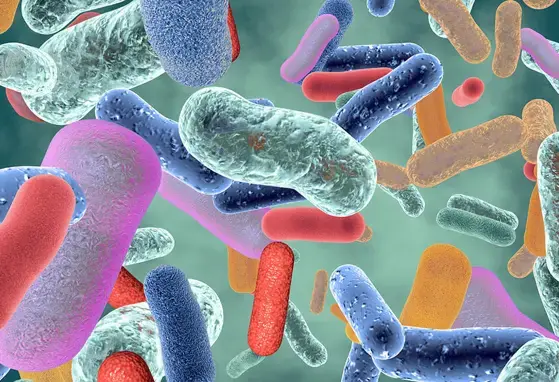AAP Guideline for Screening and Management of High Blood Pressure in Children and Adolescents

An update to the 2004 version of American Academy of Pediatrics (AAP) guidelines, including 30 Key Action Statements intended to foster a patient-centred approach by healthcare professionals to improve patient diagnoses outcomes
These pediatric hypertension guidelines are an update of the 2004 "Fourth Report on the Diagnosis, Evaluation, and Treatment of High Blood Pressure in Children and Adolescents."
Key changes:
- Update of the term “prehypertension” to “elevated blood pressure”
- New normative pediatric blood pressure (BP) tables based on children with normal weight
- Simplified screening table for identifying BPs that require further evaluation
- Simplified BP classification in adolescents (≥ 13 years old)
- A more limited recommendation to perform BP screening only at preventive care visits
- Streamlined recommendations on initial evaluation and management of abnormal BPs
- Focus on ambulatory BP monitoring in the diagnosis and management of hypertension (HTN) among the pediatric population
- Update on when to perform echocardiography in newly diagnosed hypertensive pediatric patients and revised definition of left ventricular hypertrophy
Summary of Key Action Statements
| Key Action Statement 1 | Yearly BP measurement in children and adolescents ≥ 3 years of age |
|---|---|
| Key Action Statement 2 | BP should be monitored in children and adolescents ≥ 3 years of age if they have obesity, are taking medications that may increase BP, have renal disease, a history of aortic arch obstruction or coarctation, or diabetes |
| Key Action Statement 3 | Diagnosis of HTN should be made if a child or adolescent has auscultatory-confirmed BP readings ≥ 95th percentile on 3 different occasions |
| Key Action Statement 4 | Organisations with electronic health records should consider including flags for abnormal BP vales during data entry and when they are being viewed |
| Key Action Statement 5 | Validated oscillometric devices may be used for BP screening in children and adolescents, where subsequent auscultation to confirm suspected BP elevation is required |
| Key Action Statement 6 | Ambulatory blood pressure monitoring (ABPM) should be performed to confirm HTN in children and adolescents who had office BP measurements in the elevated BP category for ≥ 1 year, or those with stage 1 HTN over 3 clinic visits |
| Key Action Statement 7 | Routine ABPM should be strongly considered in high-risk children and adolescents to evaluate HTN severity and to determine if abnormal circadian BP patterns are present |
| Key Action Statement 8 | ABPM should be performed by using a standardized approach with validated monitors, while results should be interpreted by using pediatric normative data |
| Key Action Statement 9 | Children and adolescents with suspected white coat hypertension (WCH) should undergo ABPM. Diagnosis is made if mean SBP and DBP < 95th percentile and SBP and DBP load < 25% |
| Key Action Statement 10 | Home BP monitoring should not be used to diagnose HTN, WCH or masked hypertension (MH), but may serve as a useful adjunct to office and ambulatory BP measurement after HTN has been diagnosed |
| Key Action Statement 11 | Children and adolescents ≥ 6 years of age with a positive family history of HTN, are overweight or obese, and/or do not have a history or physical examination findings suggestive of a secondary cause of HTN, do not require an extensive evaluation for secondary causes of HTN |
| Key Action Statement 12 | Children and adolescents who had coarctation repair should undergo ABPM to screen for HTN |
| Key Action Statement 13 | Provider should obtain a perinatal history, appropriate nutritional history, physical activity history, psychosocial history, and family history and perform a physical examination, to identify possible secondary causes of HTN in children and adolescents who are being evaluated for high BP |
| Key Action Statement 14 | Electrocardiography should not be performed in hypertensive children and adolescents being assessed for left ventricular hypertrophy |
| Key Action Statement 15 | Echocardiography for the assessment of cardiac target organ damage at the time of consideration of pharmacologic treatment of HTN |
| Key Action Statement 16 | Doppler renal ultrasonography may be used as a non-invasive screening tool for the evaluation of possible renal artery stenosis (RAS) in children with normal weight and adolescents ≥ 8 years of age who are suspected of having renovascular HTN |
| Key Action Statement 17 | In children and adolescents suspected of having RAS, clinicians may perform computed tomographic angiography (CTA) or magnetic resonance angiography (MRA) as a noninvasive imaging study, while nuclear renography should generally be avoided |
| Key Action Statement 18 | Routine testing for microalbuminuria (MA) is not recommended for children and adolescents diagnosed with primary HTN |
| Key Action Statement 19 | The treatment goal should be a reduction in SBP and DBP to < 90th percentile and < 130/88 mmHg in adolescents ≥ 13 years old diagnosed with HTN |
| Key Action Statement 20 | After the diagnosis of elevated BP or HTN, clinicians should provide advice on the DASH diet and recommend regular physical activity (moderate to vigorous level, 30-60 minutes per session, at least 3 to 5 days per week) |
| Key Action Statement 21 | In those who failed lifestyle modifications, clinicians should initiate pharmacologic treatment with an ACE inhibitor, angiotensin receptor blockers (ARB), long-acting calcium channel blocker, or thiazide diuretic |
| Key Action Statement 22 | ABPM may be used to assess the effectiveness of treatment in children and adolescents with HTN |
| Key Action Statement 23 | Children and adolescents with chronic kidney disease (CKD) should be evaluated for HTN every time; Those with both CKD and HTN should be treated to lower 24-hour mean arterial pressure (MAP) to < 50th percentile by ABPM; While patients with CKD and a history of HTN should have BP assessed by ABPM at least annually to screen for MH |
| Key Action Statement 24 | Children and adolescents with CKD and HTN should be assessed for proteinuria |
| Key Action Statement 25 | Children and adolescents with CKD, HTN, and proteinuria should be treated with either ACE inhibitor or ARB |
| Key Action Statement 26 | Children and adolescents with type 1 or type 2 diabetes mellitus (T1DM or T2DM) should be assessed for HTN every time and treated if BP is ≥ 95th percentile or > 130/80 mmHg in adolescents ≥ 13 years of age |
| Key Action Statement 27 | Short-acting antihypertensive medication should be initiated immediately for children and adolescents with acute severe HTN and life-threatening symptoms, where BP should be reduced by no more than 20% of the planned reduction over the first 8 hours |
| Key Action Statement 28 | Children and adolescents with HTN may participate in competitive sports once hypertensive target organ effects and risk have been evaluated |
| Key Action Statement 29 | Before participating in competitive sports, children and adolescents with HTN should receive treatment to lower BP below stage 2 |
| Key Action Statement 30 | Adolescents with elevated BP or HTN should have their care transitioned to a adult care provider by 22 years of age |
Reference
Flynn JT, et al. Clinical Practice Guideline for Screening and Management of High Blood Pressure in Children and Adolescents. Pediatrics. 2017;140(3):e20171904.
Link to full publication: http://pediatrics.aappublications.org/content/early/2017/08/21/peds.2017-1904
If you liked this post you may also like

[Guideline Summary] S3 guidelines on allergy prevention

[Literature library] Coronavirus Disease 2019 (COVID-19) mRNA-based vaccination and breastfeeding

![[Literature Library] Epitope-Specific Response of Human Milk sIgA in COVID-19 Recovered Women](/sites/default/files/styles/card_m_mobile/public/2021-07/205_COVID-opt.jpg.webp?itok=jNfgf4cf)
[Literature Library] Epitope-Specific Response of Human Milk sIgA in COVID-19 Recovered Women